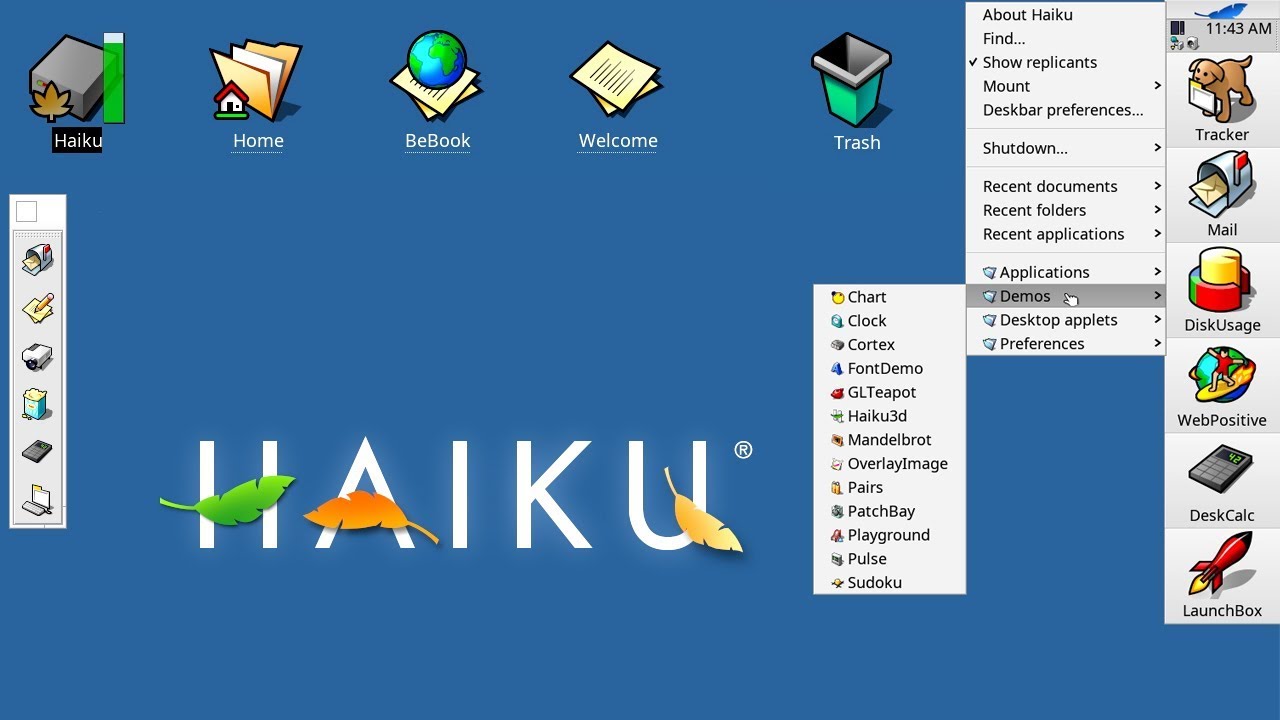Portable CD-ROMs once promised the future of computing: unlimited storage, multimedia capabilities, and data portability in your pocket. Today, they’re museum pieces. 📀
The Dawn of a Storage Revolution 🌅
In the early 1990s, the technology landscape was dramatically different from what we know today. Floppy disks with their meager 1.44 MB capacity dominated the portable storage market, and users were desperately seeking solutions to transfer larger files between computers. Enter the Compact Disc Read-Only Memory, or CD-ROM, which initially appeared as a desktop revolution with its unprecedented 650-700 MB capacity.
The concept of portable CD-ROMs emerged as manufacturers recognized the growing need for mobile computing solutions. These devices combined the storage capacity of standard CD-ROM drives with the convenience of external connectivity, typically through parallel ports, SCSI connections, or later USB interfaces. For professionals, students, and enthusiasts alike, portable CD-ROM drives represented freedom from the constraints of fixed desktop configurations.
The technology wasn’t just about storage capacity. CD-ROMs brought multimedia to the masses, enabling the distribution of encyclopedia software, interactive games, educational programs, and eventually entire software suites on single discs. The portable variants of these drives meant users could access this content anywhere, transforming laptops into true multimedia workstations.
Why Portable CD-ROMs Became Essential Technology
During their heyday in the mid-to-late 1990s and early 2000s, portable CD-ROM drives served multiple critical functions that made them indispensable tools for many users. Business travelers could carry presentations and product catalogs without lugging heavy laptops with built-in drives. Students could access reference materials in libraries or study groups. Software developers could test their products across different machines without installation hassles.
The gaming industry particularly benefited from this technology. Classic titles like Myst, The 7th Guest, and later bestsellers like Diablo and StarCraft came on CD-ROMs, offering rich graphics and audio that floppy disks could never accommodate. Portable drives meant gamers could enjoy these experiences on multiple computers, at LAN parties, or while traveling.
Technical Specifications That Mattered
Early portable CD-ROM drives faced significant technical challenges. Connection speeds through parallel ports were painfully slow, often maxing out at 1-2x read speeds (150-300 KB/s). The devices required external power supplies, making them bulky and inconvenient. Weight was another issue, with many units exceeding two pounds without cables and power adapters.
As technology evolved, manufacturers introduced several improvements:
- SCSI connections offering faster data transfer rates for professional users
- PCMCIA card interfaces designed specifically for laptops
- USB 1.1 and later USB 2.0 connectivity, dramatically improving both speed and convenience
- Bus-powered designs eliminating the need for external power sources
- Slimmer form factors reducing weight and improving portability
- CD-RW capabilities allowing users to write and rewrite data
The Golden Era: When Every Laptop Bag Had One 💼
Between 1998 and 2005, portable CD-ROM drives experienced their peak popularity. Laptop manufacturers began shipping ultraportable models without integrated optical drives to reduce weight and extend battery life. These slim notebooks were marketed toward mobile professionals who prioritized portability over built-in features, creating a massive market for external optical drives.
Major technology companies like Sony, Panasonic, Toshiba, and newer players like Iomega competed fiercely in this space. Prices ranged from affordable $50 units for basic CD-ROM reading to premium $300+ models offering DVD capabilities and fast write speeds. Marketing campaigns emphasized the professional image of carrying these sleek silver or black devices, positioning them as essential business accessories alongside leather portfolios and mobile phones.
The education sector also drove demand significantly. Universities equipped computer labs with portable drives that students could check out, similar to library books. Educational software publishers distributed their products exclusively on CD-ROMs, making these drives necessary for completing coursework. Distance learning programs mailed course materials on discs, requiring students to have reliable optical drive access.
The DVD Evolution and Dual-Format Drives
As DVDs emerged in the late 1990s with their superior 4.7 GB capacity, portable drive manufacturers quickly adapted. Combo drives that could read both CDs and DVDs became standard, followed by units capable of burning both formats. This evolution seemed to promise an even brighter future for portable optical media technology.
Movie studios embraced DVDs enthusiastically, and portable DVD drives enabled laptop users to watch films during flights or hotel stays. Before in-flight entertainment systems and streaming services, a laptop with a portable DVD drive represented the height of travel luxury for entertainment-minded consumers.
The Cracks Begin to Show: Early Warning Signs ⚠️
Despite their popularity, portable CD-ROM drives always had inherent limitations that would eventually contribute to their downfall. The physical nature of optical discs made them vulnerable to scratches, which could render data inaccessible. The spinning mechanism consumed significant power, draining laptop batteries faster than users appreciated. The devices were also mechanically complex, with moving parts prone to failure from drops or rough handling.
Read and write speeds, while improving over time, never matched the performance of internal hard drives. Installing software or copying large files from optical media remained a time-consuming process that tested user patience. Buffer underrun errors during burning operations frustrated users, often ruining discs and wasting time.
More fundamentally, the sequential access nature of CD-ROMs contrasted poorly with the random access capabilities of hard drives. Users couldn’t efficiently work with files directly from optical media; they needed to copy data to hard drives first, adding extra steps to workflows.
The Perfect Storm: Multiple Technologies Converge Against Optical Media 🌪️
The decline of portable CD-ROMs didn’t result from a single competing technology but rather from multiple simultaneous advances that collectively rendered them obsolete. Each new innovation chipped away at different advantages that optical media once held.
USB Flash Drives: The Immediate Threat
USB flash drives appeared in the early 2000s and immediately challenged portable optical drives in the portable storage market. Initially expensive and limited to 8-64 MB capacities, flash drives seemed like novelties. However, their solid-state design, compact size, and simple plug-and-play operation offered undeniable advantages.
As manufacturing costs plummeted following Moore’s Law principles, flash drive capacities exploded while prices dropped. By 2005, a 1 GB flash drive cost less than $50. By 2010, 16 GB units sold for under $20. Today, 128 GB flash drives retail for less than $15, offering capacities that would require hundreds of CD-ROMs and providing read/write speeds orders of magnitude faster than optical media ever achieved.
Flash drives eliminated the need for special hardware beyond the USB ports already present on every computer. They withstood physical abuse that would destroy optical discs. They operated silently without spinning mechanisms or laser assemblies. For portable storage, they were simply superior in nearly every measurable way.
Broadband Internet and Digital Distribution
The expansion of broadband internet access fundamentally changed how users obtained and shared content. Software publishers began offering digital downloads instead of physical media. Games distributed through platforms like Steam eliminated the need for installation discs entirely. Operating system updates that once required multiple CDs could now download automatically overnight.
Cloud storage services like Dropbox, Google Drive, and OneDrive emerged, offering seamless file synchronization across devices without any physical media. Users could access their documents, photos, and files from anywhere with internet connectivity, making portable drives of any kind seem antiquated.
Streaming services delivered the knockout punch to portable DVD drives specifically. Netflix, Hulu, YouTube, and countless others provided instant access to vast content libraries without physical media. Why carry DVDs and a portable drive when your laptop could stream thousands of films and shows on demand?
Internal Storage Capacity Explosion
Laptop hard drive capacities grew exponentially throughout the 2000s, reducing the need for external storage media. A typical 2000-era laptop might have a 10-20 GB hard drive, making CD-ROMs useful for storing archived data. By 2010, 500 GB laptop drives were standard. Today’s solid-state drives offer 1 TB or more in ultraportable form factors, providing storage equivalent to over 1,400 CD-ROMs internally.
With such massive internal storage, users could keep their entire digital lives on their laptops without external media. The use case for portable optical drives shrank to rare occasions requiring legacy disc access.
The Market Collapse: From Mainstream to Niche 📉
Industry sales data tells the story clearly. Portable optical drive sales peaked around 2006-2007, then entered sharp decline. By 2010, most consumers had abandoned them entirely. By 2015, even finding these devices in mainstream retail stores became difficult. Today, portable CD-ROM drives occupy dusty corners of electronics specialty shops, purchased mainly by vintage computing enthusiasts or businesses maintaining legacy systems.
Laptop manufacturers accelerated this decline by eliminating optical drives from their designs entirely. Apple’s 2008 MacBook Air pioneered the thin-and-light category without an optical drive, initially controversial but ultimately prescient. Other manufacturers followed, recognizing that few users actually needed optical drives while many prioritized slim profiles and light weight.
Software publishers completed the transition away from physical media. Microsoft stopped including Windows installation discs, instead providing digital downloads or USB installation media. Adobe moved creative software to subscription-based cloud services. Gaming giants EA, Ubisoft, and Activision embraced digital distribution almost exclusively.
What Remains: The Legacy and Lessons Learned 💭
Today, portable CD-ROM drives serve primarily nostalgic and archival purposes. Retro gaming enthusiasts use them to install classic titles on period-appropriate hardware. Archives and libraries employ them to access historical data stored on aging optical media. Musicians occasionally encounter sample libraries distributed on DVD-ROMs that require optical drives to access.
The technology taught the industry important lessons about portable storage. Physical media requires handling care and degrades over time. Mechanical complexity increases failure points. Proprietary formats create obsolescence risks. These lessons informed the design of subsequent technologies, leading to more robust, reliable, and user-friendly solutions.
The rapid rise and fall of portable CD-ROMs also demonstrates how quickly “revolutionary” technology can become obsolete when superior alternatives emerge. No amount of incremental improvement could save optical drives once flash storage, broadband internet, and cloud services matured. The lesson for today’s technology landscape is clear: no dominant technology is permanent, and disruption often comes from multiple directions simultaneously.
Finding and Using Portable CD-ROM Drives Today 🔍
For those rare situations requiring portable optical drive access today, options still exist. Amazon and eBay offer both new budget units (around $20-30) and used professional-grade drives. USB 3.0 models provide the fastest possible performance for optical media, though even these feel glacially slow compared to modern storage technologies.
Common reasons people still purchase these devices include:
- Installing operating systems on older computers lacking network boot capabilities
- Accessing archived family photos or documents stored on CD-Rs decades ago
- Playing classic PC games that require original discs for authentication
- Ripping CD collections to digital formats for modern music libraries
- Reading data from legal, medical, or business archives stored on optical media
When purchasing a portable optical drive today, prioritize USB 3.0 connectivity for maximum compatibility and speed. Verify compatibility with your operating system, as driver support for older drives may be inconsistent on modern platforms. Consider purchasing from reputable brands that still offer warranty support, as mechanical failures remain common with optical drives.
The Broader Implications: Portable Storage’s Continuing Evolution 🚀
The story of portable CD-ROMs isn’t simply about one technology’s obsolescence. It represents a broader pattern in portable storage evolution, from floppy disks to optical media to flash drives to cloud storage. Each generation promised revolutionary improvements, dominated for a period, then yielded to superior alternatives.
Today’s portable storage landscape looks dramatically different from the CD-ROM era. External solid-state drives offer multi-terabyte capacities in devices smaller than portable CD-ROM drives, with transfer speeds exceeding 1000 MB/s through USB-C or Thunderbolt connections. Cloud storage provides device-independent access to files from anywhere with connectivity. Wireless transfer technologies like AirDrop and Nearby Share eliminate the need for physical connection entirely.
Yet the fundamental need that portable CD-ROMs addressed—moving data between devices reliably and conveniently—remains relevant. The solutions have evolved, but the problem persists. Understanding how and why portable CD-ROMs rose and fell helps contextualize today’s storage technologies and anticipate future developments.
Saying Goodbye Without Forgetting 👋
Portable CD-ROM drives deserve recognition for their contributions to computing history, even as they fade into obsolescence. They democratized multimedia computing, enabling laptops to match desktop capabilities. They facilitated the software industry’s transition from floppy-based distribution to the modern digital download era. They provided crucial portable storage during the awkward period when hard drives were too small and flash memory too expensive.
For many technology professionals and enthusiasts, portable CD-ROM drives evoke powerful nostalgia. They remember installing their first copy of Windows XP from a portable drive, or watching The Matrix on a laptop during a long flight, or sharing game discs with friends at LAN parties. These memories represent not just technology but moments in personal history when computing was rapidly evolving and each new device promised exciting possibilities.
As we say goodbye to portable CD-ROMs as practical technology, we can appreciate both their achievements and the superior solutions that replaced them. The technology industry’s relentless innovation means constantly leaving behind once-revolutionary devices, but each generation builds upon lessons learned from its predecessors. Portable optical drives played their role in this ongoing evolution, and their legacy persists in the faster, more reliable, more convenient portable storage technologies we enjoy today.
The rise and fall of portable CD-ROM technology reminds us that in the technology world, revolution and obsolescence are two sides of the same coin, separated only by time and innovation. What seems indispensable today may become tomorrow’s curiosity, replaced by solutions we haven’t yet imagined. That’s not a cause for sadness but rather excitement about the continued evolution of technology serving human needs in ever-improving ways.
Toni Santos is a visual historian and creative artisan whose work channels the bold spirit of the steam-powered era—a time when imagination, mechanics, and ambition converged to reshape the modern world. Through richly detailed visual narratives and handcrafted design, Toni celebrates the legacy of steam innovation as both an artistic and technological revolution.
Driven by a passion for mechanical aesthetics, forgotten inventions, and industrial-age ingenuity, Toni reimagines the world of steam through illustrations, tactile artifacts, and storytelling that capture the poetry of pressure, motion, and invention. From piston-driven engines to brass-detailed diagrams, each piece reveals how steam wasn’t just power—it was promise.
With a background in visual design and historical research, Toni brings a craftsman’s eye and a dreamer’s heart to the stories of tinkerers, inventors, and visionaries who shaped the 19th century. His work doesn’t merely document machines—it honors the culture, courage, and creativity that drove a world to reimagine itself through gears, valves, and vapor.
As the creative voice behind Vizovex, Toni shares curated articles, reconstructed blueprints, and visual interpretations that bring this industrial past to life. His collections serve as a tribute to:
The elegance of steam-era design and innovation
The human stories behind great mechanical feats
The aesthetic beauty found in function and form
The echo of invention in today’s creative world
Whether you’re a history lover, a fan of steampunk, or an admirer of antique technology, Toni welcomes you into a world where art and machinery fuse, one cog, one drawing, one rediscovered marvel at a time.





